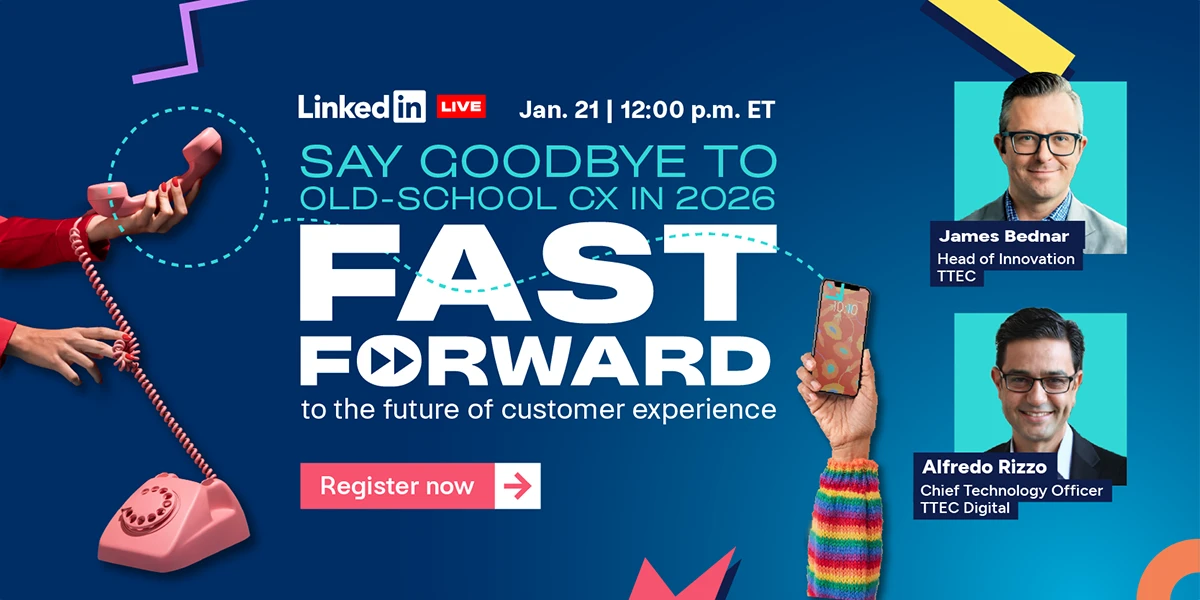For many customer experience leaders, trying to keep up with the processes, journey maps, and data points that make up today’s customer experience can feel like being on a boat that’s quickly filling up with water. And the next thing you know, the company has sunk into subpar customer experiences.
As the nature of work changes, the key is to evolve human labor alongside digital labor to improve productivity and experience quality. We call this “Thoughtful automation.”
But have no fear. Grouping areas of the customer experience into buckets makes it far more manageable. In fact, here are 10 “buckets” grounded in real-life examples that leaders can use to not only stay afloat, but sail smoothly through challenges. Future blogs will go into more detail about each of these topics, but here’s some insight to scratch the surface of where to focus:
- Self service
Self-service options are growing more advanced (think Amazon Go’s cashier-less supermarkets), but customers often still want a human touch. Balancing the demand for seamless self-service and knowledgeable associates is an issue that more companies will need to solve. We’ll share strategies for doing just that. - Artificial Intelligence/Bots
It’s unquestionable that AI is transforming industries. In fact, 72 percent of business leaders consider AI a fundamental “business advantage,” according to a survey by PwC. But aside from vague, visionary ideas, what are some practical uses for AI technology to improve the customer experience? We’ll go over the nuts and bolts of AI implementation. - Advanced voice analytics and machine learning
Increasingly, companies are using voice analytics to derive key insights from unstructured data that can be converted into actionable solutions. And combined with AI, voice analytics are gaining in sophistication and uses. We’ll review the latest trends in voice analytics and ways to implement them. - Employee learning and development
As digital technologies accelerate, the business landscape and relations between workers and enterprises are changing rapidly, with more changes on the horizon. To compete, companies must embrace new strategies in learning and development to ensure that employees are engaged and equipped with the right skills. We’ll share best practices for quickly and effectively training employees with the latest tools and more. - Omnichannel success
Most companies already know that consumers demand connected and consistent service. But data integration gaps, organizational silos, and many other obstacles often prevent companies from accomplishing their omnichannel goals. And while omnichannel success can mean different things to each company, we’ll share ideas for tailoring the concept of omnichannel experiences to fit your customers’ needs and expectations. - Incenting desired behaviors
If done incorrectly, employee incentives are a minefield of disastrous behavior. Just ask Wells Fargo. There’s also a lot of evidence that shows incentive programs are effective at motivating employees to reach higher levels of performance and productivity. We’ll share tips and strategies for incenting the right behaviors. - 360-degree views of the customer
Every customer experience leader wants a 360-degree view of the customer, but many settle for a far narrower view. However, consumers, especially loyal customers, expect companies to know who they are, what they want, and how they want it. We’ll discuss practical strategies for taking a holistic approach to collecting and leveraging meaningful customer data. - Meaningful metrics
Nearly everything about a project or initiative is measurable—but that doesn’t necessarily mean it’s important. Also, how are companies measuring success in today’s always-on, highly-fragmented and data-driven world? We’ll share examples and lessons from companies that are doing exactly that. - Change management
The adage that “everyone loves innovation, but no one wants change,” rings true for many people. And while a brand might have valid reasons for changing a product or service, those changes are pointless if the customer doesn’t accept it. We’ll discuss ideas for creating an internal culture that embraces change and how to get customers to embrace those new experiences as well. - Workforce management
Keeping up with the expectations and needs of the modern workforce is important for any employer who wants to retain his or her best employees. And as competition for talent continues to grow, employers can’t afford to get workforce management wrong. We’ll share advice on how to successfully manage your workforce and keep your staff—and customers—happy.
We’ll dive into each of these buckets in subsequent blogs, so stay tuned!
















